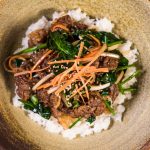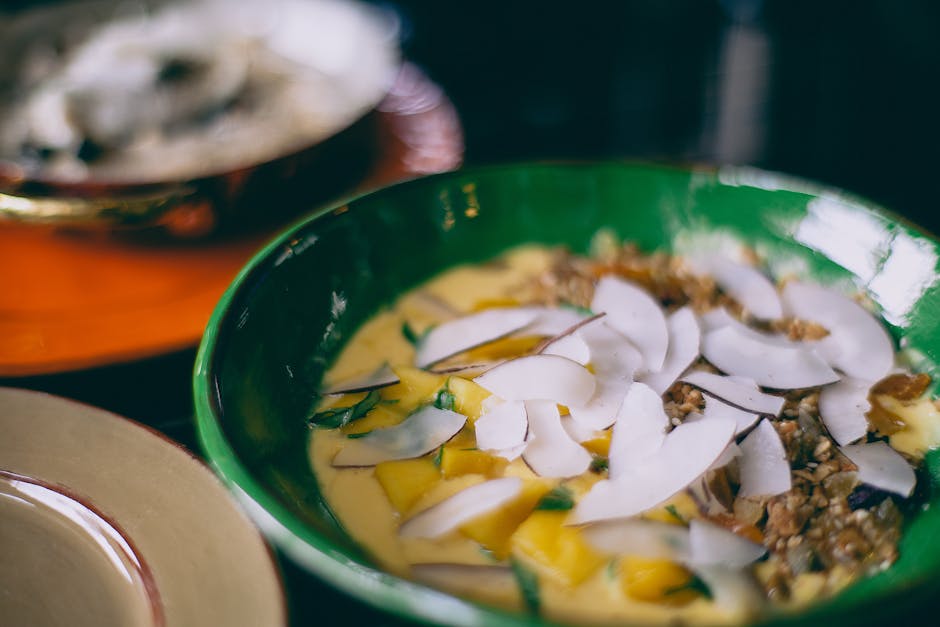Easy Fresh Spring Rolls, also known as gỏi cuốn in Vietnamese or poh pia sod in Thai, are a delightful and refreshing culinary creation with a rich and fascinating history. While pinpointing a single origin is difficult, their popularity across Southeast Asia suggests a long and interwoven evolution. The earliest forms of spring rolls likely originated in Southern China, centuries ago, with variations emerging and evolving as trade routes spread throughout the region. These early versions often involved wrapping fillings in rice paper, a practice that continues to this day. Over time, distinct regional variations developed, reflecting the unique ingredients and culinary traditions of each culture. For example, Vietnamese spring rolls often emphasize fresh herbs and shrimp, while Thai spring rolls might incorporate ground meat or more assertive spices.
The spread of spring rolls across Southeast Asia is inextricably linked to the region’s diverse history. The influence of Chinese cuisine is undeniable, with many variations stemming from early Chinese immigrants who brought their culinary skills and traditions to new lands. The subsequent adaptation and localization of the dish within each country showcases the dynamic exchange of culinary ideas throughout the region. The relative simplicity of the preparation method likely contributed to its widespread adoption and popularity. Unlike many complex dishes, the basic components—rice paper, fresh vegetables, and protein—are readily available in many parts of Southeast Asia, making it an accessible and sustainable food source.
Today, spring rolls enjoy immense global popularity. They’re a staple in many Southeast Asian cuisines and have become a beloved dish worldwide, appearing on menus in restaurants across the globe. Their versatility allows for endless customization, making them appealing to a diverse range of palates. While precise statistics are difficult to obtain globally, the popularity of spring rolls is evident in the countless recipes found online, the numerous restaurants offering them, and the increasing demand for fresh produce used in their preparation. The global health and wellness trend also plays a significant role in their surging popularity, as their light, fresh, and nutritious nature aligns perfectly with contemporary dietary preferences. Furthermore, the interactive nature of assembling spring rolls makes them a fun and engaging dish, perfect for gatherings and social occasions. This vibrant culinary legacy continues to evolve, reflecting the ever-changing tastes and culinary innovations of our time.
Ingredients and Measurements
Creating perfect fresh spring rolls hinges on using fresh, high-quality ingredients and precise measurements. This recipe yields approximately 12 spring rolls, easily adjustable to your needs.
Rice Paper Wrappers: 12 large (approximately 8-inch diameter) rice paper wrappers. Choose wrappers that are thin and pliable for easier rolling. Avoid those that are brittle or thick, as they can crack during the process. Store unused wrappers in an airtight container in a cool, dry place. If they become dry, you can briefly soak them in warm water to restore their flexibility.
Vermicelli Rice Noodles: 8 ounces (225g) dried vermicelli rice noodles. Cooking the noodles according to package directions is crucial. Slightly undercooking them ensures they remain firm and don’t become mushy inside the spring rolls. Rinse under cold water immediately after cooking to prevent sticking and to stop the cooking process. Drain thoroughly before adding to your filling.
Fresh Herbs: A vibrant mix of fresh herbs is essential for both flavor and visual appeal. We recommend the following quantities, but feel free to adjust to your preferences: 1 cup loosely packed mint leaves, 1 cup loosely packed cilantro leaves, 1/2 cup loosely packed Thai basil leaves (if available, it adds a unique licorice-like flavor). Wash herbs thoroughly and pat them dry before chopping to maintain their freshness and prevent excess moisture in your rolls.
Vegetables: The vegetable selection offers endless possibilities! We suggest: 1 large carrot, julienned (about 1 cup), 1/2 cup shredded red cabbage (adds a nice crunch and color), 1 cucumber, julienned (about 1 cup), 1/2 cup bean sprouts (for a delicate crunch). Choose vegetables that are crisp and firm. Avoid using overly soft or watery vegetables, as they can make the rolls soggy. Uniformly sized julienned or shredded vegetables make rolling easier and create a more aesthetically pleasing finished product.
Protein (Optional): Add your favorite protein for a more substantial meal. Popular choices include cooked shrimp (about 1 cup, peeled and deveined), cooked chicken (about 1 cup, shredded or diced), or tofu (about 1 cup, pressed and cubed). Ensure your protein is completely cooked and cooled before adding to the spring rolls. Overcooked or undercooked protein can impact both the texture and safety of the finished product.
Peanut Sauce (Optional, Recipe Not Included): While not included in the ingredient list, a delicious peanut sauce is almost mandatory! A simple peanut sauce adds a wonderful richness and depth of flavor. You can find numerous recipes online or in cookbooks. Prepare the sauce ahead of time to allow the flavors to meld.
Important Note: These measurements are guidelines. Feel free to adjust quantities based on your preference and the number of spring rolls you wish to make. The key is to maintain a balance of flavors and textures within each roll.
Preparation of Vegetables (Washing, Peeling, and Slicing)
Proper preparation of your vegetables is crucial for creating delicious and visually appealing spring rolls. This section will guide you through washing, peeling, and slicing the key ingredients, ensuring optimal texture and flavor in your final dish. We’ll be focusing on common spring roll vegetables, but feel free to adapt these techniques to your preferred selections.
Washing: Begin by thoroughly washing all your vegetables under cold, running water. This removes any dirt, pesticides, or debris that may be present. For leafy greens like lettuce and mint, gently swish them in a large bowl of cold water to dislodge any lingering particles. Avoid using soap, as it can leave a residue affecting the taste. After washing, gently pat the vegetables dry with clean paper towels or a salad spinner. This step is crucial to prevent excess moisture from making your spring rolls soggy.
Peeling (where applicable): Not all vegetables require peeling. Carrots, cucumbers, and bell peppers often benefit from having their skins removed. Use a vegetable peeler to efficiently remove the outer layer. For carrots, consider peeling only partially to retain some of the vibrant color and nutrients closer to the core. With cucumbers, a peeler is useful for removing the sometimes bitter outer layer. For bell peppers, remove the stem, core, and seeds before peeling, if desired. Peeling should be done gently to avoid removing too much of the edible part of the vegetable.
Slicing: Consistent slicing is essential for both aesthetics and ease of rolling. Aim for uniform sizes and shapes for each vegetable to ensure a balanced bite. Here are some suggestions based on common spring roll ingredients:
- Carrots (2 medium): Peel and use a mandoline slicer or sharp knife to create thin, matchstick-like strips, approximately 2-3 inches long. Alternatively, use a julienne peeler for even thinner strips.
- Cucumbers (1 large): Wash and peel (optional). Slice into thin half-moons or matchsticks, about 1/4 inch thick. If using English cucumbers, peeling may not be necessary.
- Bell Peppers (1 of each color, if desired): Remove stem, core, and seeds. Slice into thin strips, approximately 2-3 inches long and 1/4 inch wide. Consider using multiple colors for visual appeal.
- Lettuce (4-5 leaves): Wash and dry thoroughly. Tear or cut into bite-sized pieces, avoiding overly large pieces that will make rolling difficult.
- Fresh Herbs (1/4 cup each mint and cilantro): Wash and dry. Roughly chop the herbs into small pieces.
Important Note: Prepare your vegetables just before assembling your spring rolls to maintain their freshness and crispness. If you’re preparing ahead, store your sliced vegetables in airtight containers and refrigerate, but be mindful that some vegetables may lose their crispness over time.
Professional Tip: Invest in a good quality chef’s knife and a mandoline slicer for efficient and consistent vegetable preparation. A mandoline slicer, in particular, will ensure even, thin slices for all your vegetables, resulting in beautifully presented spring rolls.
Rice Paper Wrapper Preparation
Preparing rice paper wrappers correctly is crucial for achieving perfect spring rolls. Over-softening leads to tearing, while under-softening makes them difficult to work with and results in brittle rolls. This section details the optimal method for preparing your wrappers, ensuring a smooth and enjoyable spring roll-making experience.
First, gather your supplies: a large, shallow dish (approximately 12 inches in diameter); warm (not hot!) water; and your rice paper wrappers. The size of your dish is important; a smaller dish will overcrowd the wrappers, leading to uneven softening. Avoid using a deep dish, as this will submerge the wrappers completely, making them too soggy.
Fill the dish with warm water. The water should be comfortably warm to the touch, around 105-115°F (40-46°C). Testing the temperature with your finger is the best method. Too hot water will damage the wrappers, causing them to become brittle and tear easily, while water that’s too cold will result in stiff, unyielding wrappers that are difficult to manipulate.
Dip each wrapper individually. Carefully place one rice paper wrapper into the warm water, ensuring it’s fully submerged but not left to soak. Avoid overcrowding the dish; only submerge 2-3 wrappers at a time, depending on the size of your dish. The ideal soaking time is approximately 10-15 seconds for a standard sized (8-9 inch) wrapper. Keep an eye on the wrapper – it should begin to soften and become pliable. If it becomes too soft and starts to tear, reduce the soaking time.
Remove and lay flat. Once softened, gently lift the wrapper from the water using your fingertips or a pair of tongs. Allow any excess water to drip off briefly before laying it flat on a clean, dry surface. A large cutting board or a clean kitchen towel works well. Work quickly; the wrapper will begin to dry out again if left for too long.
Prepare multiple wrappers in advance. While it’s best to work with one wrapper at a time to prevent drying, you can prepare a small batch (3-4 wrappers) in advance. Keep the prepared wrappers covered with a slightly damp kitchen towel to prevent them from drying out completely. This allows for a more efficient assembly process, especially when making a large number of spring rolls.
Experiment and adjust. The ideal soaking time may vary slightly depending on the brand and thickness of your rice paper wrappers. Pay close attention to the texture of the wrapper and adjust the soaking time accordingly. With practice, you’ll develop a feel for the perfect level of softness, enabling you to create perfectly pliable and easy-to-handle wrappers for your delicious spring rolls.
Troubleshooting: If your wrappers are still tearing easily, try using slightly cooler water. If they are too stiff, increase the soaking time slightly, but be mindful of over-softening.
Assembly of Spring Rolls
With your fillings prepared and rice paper wrappers ready, it’s time to assemble your fresh spring rolls! This process may seem daunting at first, but with a little practice, you’ll be rolling like a pro. The key is to work efficiently and keep your workspace organized. Have all your ingredients within easy reach and a damp kitchen towel nearby to prevent the rice paper from drying out too quickly.
Prepare your workspace: Lay down a clean, flat surface, ideally a large cutting board or countertop. Have a shallow dish filled with lukewarm water readily available. This is crucial for softening the rice paper wrappers before assembly. Don’t use hot water, as it can make the wrappers too fragile.
Softening the rice paper: Dip each rice paper wrapper into the lukewarm water for just a few seconds, or until it softens and becomes pliable. Do not soak it for too long; this will make it too soft and prone to tearing. Immediately lay the softened wrapper flat on your work surface.
Arranging the fillings: Place a small amount of each filling – approximately 2 tablespoons of combined ingredients – in a line across the center of the rice paper wrapper, about 2 inches from the bottom edge. Avoid overcrowding; too many fillings will make the roll difficult to close and may cause it to burst. A good balance of textures and flavors is key. For example, you might include 1 tablespoon of vermicelli noodles, ½ tablespoon of shredded carrots, ½ tablespoon of lettuce, 1 tablespoon of cooked shrimp or tofu, and a few fresh herbs.
Rolling the spring roll: Using your fingers, gently fold the bottom edge of the wrapper over the fillings. Then, fold in the sides, tucking them in tightly. Fold the sides in tightly to prevent the fillings from spilling out. Next, continue rolling tightly away from you, using your fingers to guide the wrapper. The final roll should be firm but not overly compressed.
Securing the roll: Once you reach the end, you may need to lightly dampen the top edge of the wrapper with your finger to help seal it. A small amount of water applied with your fingertip is enough to create a seal. Avoid using too much water, as this could weaken the wrapper.
Repeating the process: Repeat this process for each spring roll. Work quickly and efficiently to prevent the wrappers from drying out. If the wrapper starts to dry out before you finish rolling, quickly dip it back into the water for a second or two to rehydrate it.
Professional Tip: For perfectly even rolls, use a bamboo rolling mat. The mat provides a firm and even surface, making the rolling process easier and resulting in consistently sized spring rolls. It also helps prevent the wrapper from sticking to the surface.
Serving suggestion: Once all the spring rolls are assembled, you can serve them immediately or chill them in the refrigerator for later. Arrange them on a platter and serve with your favorite dipping sauce. Enjoy!
Dipping Sauce Preparation (if applicable)
While fresh spring rolls are delicious on their own, a flavorful dipping sauce elevates the entire experience. Here are a few options to complement your vibrant spring rolls, ranging from simple to more complex preparations.
Peanut Sauce: A Classic Choice
This rich and creamy peanut sauce is a crowd-pleaser. It’s surprisingly easy to make and offers a beautiful balance of sweet, savory, and spicy notes. For a batch sufficient for about 8 spring rolls, combine the following ingredients in a food processor or blender:
- 1/2 cup creamy peanut butter (natural or regular)
- 1/4 cup soy sauce (or tamari for gluten-free)
- 2 tablespoons rice vinegar
- 2 tablespoons lime juice (freshly squeezed is best)
- 1 tablespoon honey or maple syrup (adjust to your sweetness preference)
- 1 tablespoon sesame oil
- 1-2 teaspoons sriracha or chili garlic sauce (adjust to your spice preference)
- 1/4 cup water (add more for desired consistency)
Process until completely smooth and creamy, adding more water a tablespoon at a time until you reach your preferred consistency. Taste and adjust seasonings as needed. For a smoother texture, strain the sauce through a fine-mesh sieve after blending.
Sweet Chili Sauce: A Simple and Versatile Option
If you prefer a quicker option, a store-bought sweet chili sauce works perfectly. However, for a homemade touch, you can easily create a simple version. While the exact ratios can vary based on preference, a basic recipe involves combining equal parts sweet chili sauce (from a jar), rice vinegar, and a touch of lime juice. This is a great option if you are short on time or ingredients, offering a pleasant balance of sweetness and tang.
Hoisin Sauce with a Twist: Adding Depth of Flavor
Hoisin sauce provides a unique savory and slightly sweet flavor profile. To enhance its complexity and make it a more exciting dipping sauce, consider adding a little zest. Start with 1/4 cup of high-quality hoisin sauce. Then, mix in 1 tablespoon of rice vinegar, 1 teaspoon of sesame oil, and a finely minced clove of garlic for a sophisticated flavor. A small pinch of finely grated ginger adds another layer of complexity.
Professional Recommendations:
Freshness is key: Use fresh ingredients whenever possible, especially for herbs and lime juice. This will significantly impact the overall flavor of your dipping sauce.
Adjust to your taste: Don’t be afraid to experiment with the recipes and adjust the quantities of sweet, sour, and spicy elements to match your personal preferences.
Prepare ahead: Most of these sauces can be made ahead of time and stored in the refrigerator for several days. Allow them to come to room temperature before serving for the best flavor and consistency.
Garnish: Consider garnishing your dipping sauces with chopped peanuts, sesame seeds, or a sprinkle of chili flakes for an extra visual appeal and added flavor.
Serving Suggestions
Your Easy Fresh Spring Rolls are best enjoyed immediately after preparation for optimal freshness and crispness. However, with a little care, you can prepare them ahead of time. For best results, assemble the rolls just before serving, but you can prepare the filling components up to 24 hours in advance and store them separately in airtight containers in the refrigerator.
The beauty of spring rolls is their versatility. They can be served as a light lunch, a refreshing appetizer, or even a vibrant component of a larger meal. Here are a few serving suggestions to elevate your spring roll experience:
Classic Dipping Sauces: No spring roll is complete without a delicious dipping sauce. We recommend offering a variety of options to cater to different tastes. A simple peanut sauce (1/4 cup peanut butter, 2 tablespoons soy sauce, 2 tablespoons rice vinegar, 1 tablespoon honey or maple syrup, 1 tablespoon water, a pinch of red pepper flakes whisked together) is always a crowd-pleaser. Alternatively, a sweet chili sauce (readily available in most grocery stores) provides a nice kick. For a lighter option, consider a simple soy-ginger dipping sauce (1/4 cup soy sauce, 2 tablespoons rice vinegar, 1 tablespoon grated fresh ginger, 1 teaspoon sesame oil). Provide at least two different dipping sauces for a more complete experience.
Garnish and Presentation: Elevate the visual appeal of your spring rolls by garnishing them beautifully. Sprinkle chopped fresh herbs like cilantro or mint over the platter. You can also add a few lime wedges for squeezing over the rolls before dipping. Arrange the spring rolls attractively on a large platter or serving tray. Consider using contrasting colors in your garnish to make the rolls pop visually. For example, vibrant green cilantro against the lighter color of the rice paper.
Accompanying Dishes: Spring rolls pair perfectly with a variety of dishes. Serve them alongside a light salad with a simple vinaigrette dressing for a complete and balanced meal. A bowl of fresh, crunchy vegetables like shredded carrots and cucumber adds a refreshing contrast in texture and flavor. If serving as part of a larger meal, you might consider a side of fragrant jasmine rice or some grilled chicken or tofu for added protein. Remember to consider the overall balance of flavors and textures when choosing accompanying dishes.
Serving Temperature: Spring rolls are best served at room temperature. Avoid refrigerating them for extended periods as this can make the rice paper soggy. If you’ve prepared them ahead of time, bring them to room temperature about 30 minutes before serving.
Quantity Guide: As a general guideline, plan for approximately 2-3 spring rolls per person as an appetizer or 3-4 as a light lunch. Adjust the quantity based on the size of your spring rolls and the appetites of your guests.
Storage of Leftovers (if any): Any leftover spring rolls should be stored separately from the dipping sauces in an airtight container in the refrigerator. They are best consumed within 24 hours. Do not refreeze.
Recommendations for Easy Fresh Spring Rolls
These Easy Fresh Spring Rolls are a delightful and healthy appetizer or light meal, perfect for warmer weather. To truly elevate your spring roll experience, consider these recommendations:
Serving Suggestions: For a truly authentic experience, serve your spring rolls with a vibrant dipping sauce. A classic peanut sauce is always a winner, but you can also experiment with a sweet chili sauce, a tangy hoisin sauce, or even a simple soy sauce-lime mixture. Arrange the rolls attractively on a platter garnished with fresh herbs like cilantro and mint. Consider offering a variety of fillings to allow guests to customize their rolls. For a more substantial meal, serve the spring rolls alongside a light salad or soup. They also pair well with grilled proteins like chicken or shrimp, adding a savory element to complement the fresh flavors of the rolls.
Storage Conditions: For optimal freshness, it’s best to assemble and serve spring rolls immediately. However, if you need to prepare them ahead of time, you can store the individual components separately. Wrap the rice paper wrappers tightly in plastic wrap and store them in an airtight container in the refrigerator. Store the fillings (vegetables, herbs, protein) in separate airtight containers in the refrigerator for up to 2 days. Assemble the rolls just before serving to prevent the rice paper from becoming soggy. Do not store assembled spring rolls in the refrigerator; they will become soggy.
Complementary Dishes: These spring rolls are incredibly versatile and can be incorporated into a variety of meal plans. They work beautifully as a starter for a larger meal, particularly if you are serving dishes with richer flavors. Consider pairing them with a spicy Thai green curry, a light and refreshing Vietnamese pho, or a flavorful Asian-inspired stir-fry. For a more casual setting, serve them alongside a selection of other appetizers like edamame or spring onion pancakes. The fresh and light nature of the spring rolls complements heavier, richer dishes, creating a balanced and satisfying meal.
Nutritional Information (per roll, approximate values will vary based on ingredients): The nutritional content of your spring rolls will largely depend on the specific ingredients you choose. However, a typical spring roll containing rice paper, vegetables (lettuce, carrots, cucumber), herbs (mint, cilantro), and a small amount of protein (e.g., cooked shrimp or tofu) will contain approximately 100-150 calories. This makes them a relatively low-calorie and healthy option. They are a good source of vitamins A and C, as well as fiber, contributing to a balanced diet. The protein content will vary depending on the additions, but generally, they’re a good source of plant-based protein when using tofu or beans.
Important Note: Always ensure that all ingredients are fresh and thoroughly washed before preparation. If using raw protein, ensure it’s cooked to a safe internal temperature to prevent foodborne illnesses. Enjoy responsibly!





